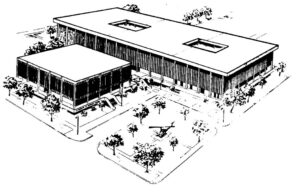CORRESPONDENCE COURSE OF
THE U.S. ARMY MEDICAL DEPARTMENT CENTER AND SCHOOL
SUBCOURSE MD0804 EDITION 200
INTRODUCTION

A patient who visits a physician or physician extender frequently receives a prescription for a medication. That prescription is brought to the pharmacy to be filled.
The patient expects professional attention at the pharmacy. Part of that expectation involves any caution or warning the patient should heed while taking the medication.
In your role, you will serve as a source of drug information. Patients and friends will ask you specific questions concerning the use of prescription and over-the-counter medications. You must know the trade and generic names of literally hundreds of medications. Furthermore, you must know the cautions and warnings associated with many agents.
How are you to know this information about drugs? Certainly you have had instruction which presented the basics of anatomy, physiology, and pharmacology. This instruction has given you a sound foundation for learning more in these areas. This
subcourse will present instruction in anatomy, physiology, and pharmacology. The material in anatomy and physiology is included to refresh your memory or to give you additional information so you can better understand the pharmacology material.
This subcourse is not intended to be used as an authoritative source of drug information. As you know, new drugs are constantly being discovered and new uses for existing drugs are being found through research. Therefore, you must rely upon this subcourse to review concepts or to learn new information. You are then to use other
sources (see lesson 1 of this subcourse) to gain new information as it is discovered.e problem before you attempt to take the final examination.
Subcourse Components:
This subcourse consists of 11 lessons. The lessons are:
Lesson 1. Professional References in Pharmacy.
Lesson 2. Anatomy, Physiology, and Pathology Important to Therapeutics.
Lesson 3. Introduction to Pharmacology.
Lesson 4. Local Anesthetic Agents.
Lesson 5. The Central Nervous System.
Lesson 6. Agents Used During Surgery.
Lesson 7. Sedative and Hypnotic Agents.
Lesson 8. Anticonvulsant Agents.
Lesson 9. Psychotherapeutic Agents.
Lesson 10. Central Nervous System (CNS) Stimulants.
Lesson 11. Narcotic Agents.
Here are some suggestions that may be helpful to you in completing this subcourse:
–Read and study each lesson carefully.
–Complete the subcourse lesson by lesson. After completing each lesson, work the exercises at the end of the lesson
–After completing each set of lesson exercises, compare your answers with those on the solution sheet that follows the exercises. If you have answered an exercise incorrectly, check the reference cited after the answer on the solution sheet to determine why your response was not the correct one.
———————-
Download Here
Therapeutics I
Length: 197 Pages
Estimated Hours to Complete: 14
Format: PDF file
Size: 1.2 MB
—————————-
Anyone may take this course. However, to receive credit hours, you must be officially enrolled and complete an examination furnished by the Nonresident Instruction Branch at Fort Sam Houston, Texas. Enrollment is normally limited to Department of Defense personnel. Others may apply for enrollment, but acceptance is not guaranteed.
—————————-
TABLE OF CONTENTS
INTRODUCTION
1 PROFESSIONAL REFERENCES IN PHARMACY
Section I. General
Section II. Pharmaceutical Journals.
Section III. Pharmaceutical Texts
Section IV. Electronic Drug Information Services
Exercises
2 ANATOMY, PHYSIOLOGY, AND PATHOLOGY IMPORTANT TO
THERAPEUTICS
Section I. Principles of Anatomy and Physiology
Section II. Cells
Section III. Tissue
Section IV. Skin
Section V. Nature and Causes of Disease17
Section VI. Treatment of Disease and Injury.
Exercises
3 INTRODUCTION TO PHARMACOLOGY
Section I. Terms and Definitions Important in Pharmacology
Section II. Introduction to Drugs
Section III. Considerations of Drug Therapy
Section IV. Factors Which Influence Drug Action
Exercises
4 LOCAL ANESTHETIC AGENTS
Section I. Background Information
Section II. Local Anesthetics and Their Clinical Uses
Exercises
5 THE CENTRAL NERVOUS SYSTEM
Section I. Basic Concepts of the Nervous System
Section II. The Neuron and its “Connections”
Section III. The Human Central Nervous System
Exercises
6 AGENTS USED DURING SURGERY
Section I. General Anesthetic Agents
Section II. Other Agents Used During Surgery
Exercises
7 SEDATIVE AND HYPNOTIC AGENTS
Section I. Background
Section II. Clinically Important Information Concerning Sedative-Hypnotics
Section III. Classification of Sedative- Hypnotic Agents
Exercises
8 ANTICONVULSANT AGENTS
Section I. Review of Epilepsy
Section II. Anticonvulsant Therapy
Exercises
9 PSYCHOTHERAPEUTIC AGENTS
Section I. Overview
Section II. Antianxiety Agents
Section III. Antidepressant Agents
Section IV. Antipsychotic Agents
Exercises
10 CENTRAL NERVOUS SYSTEM (CNS) STIMULANTS
Section I. Background
Section II. Cerebral or Psychomotor Agents
Section III. Analeptic Agents (Brain Stem Stimulants)
Section IV. Convulsants (Spinal Cord Stimulants)
Exercises
11 NARCOTIC AGENTS
Section I. Background
Section II. Narcotic Agents and Narcotic Antagonists
Exercises
ANNEX: DRUG PRONUNCIATION GUIDE
—————————-
Sample
LESSON ASSIGNMENT
LESSON 1 Professional References in Pharmacy.
TEXT ASSIGNMENT Paragraphs 1-1 through 1-8.
LESSON OBJECTIVES
1-1. Given a description of a reference used in pharmacy and a list of pharmacy references, select the particular reference being described.
1-2. Given a description of a situation requiring the
use of a pharmacy reference and a list of pharmacy references, select the reference most likely to contain the information required in that situation.
SUGGESTION After studying the assignment, complete the exercises at the end of this lesson. These exercises will help you
to achieve the lesson objectives.
—————————-
Download Here
Therapeutics I
